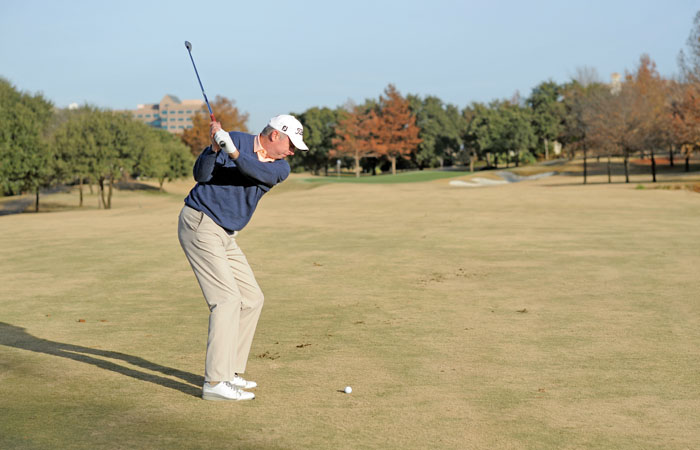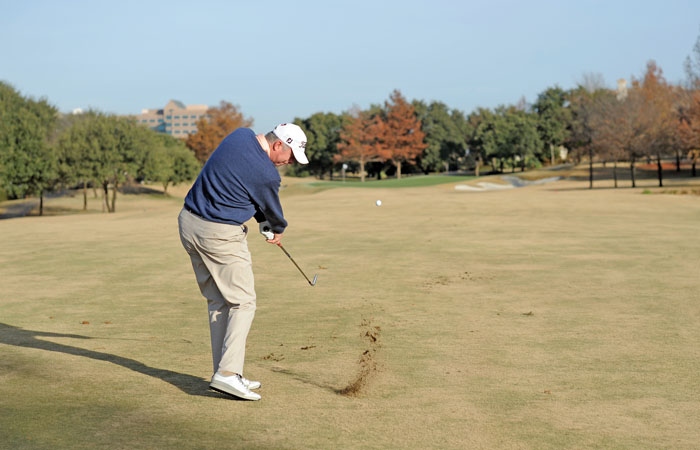One of my favorite things about golf is there are so many different ways to swing and hit various shots. There is not one specific way to swing or hit the different shots. Golf can also be played no matter what the injury is, there is a modification that can be made to help you.
For this month’s tips, I talk about ways senior players can adjust to help if they have bad knees, hips, lower back, as well as how to gain more distance and hit the ball straighter.
One of the ways seniors can help alleviate hip, knee and low-back pain when they set up to the golf ball is by flaring their toes out at 45 degrees with each foot. This helps take the stress off knees, hips and low back, as well as allowing the player to rotate their hips and shoulders more to create more distance. When the toes are at 90 degrees, this restricts rotation, resulting in less distance.
One of the most overlooked setup keys I see when focusing on getting rid of right misses for right-handed golfers and left misses for left-handed golfers is stance width. When our stance width is too wide, this can cause us to sway back and forth, causing the ball to go right (left for left-handed players). This can also restrict rotation, resulting in loss of distance.
Set up with feet slightly narrower in stance width than you normally would and flare out your toes to 45 degrees.
Check your ball position: if the ball position is too far forward in your stance, this can cause a slice and a big loss in distance. Play the ball just inside your lead foot or even slightly back of that to help you get to your lead side easily without thinking about it. In the picture below, the left picture is demonstrating what I normally see, and the right picture is demonstrating the adjustments that help alleviate pain, as well as help players gain more distance and accuracy.

Another major fault I see that causes a big loss in distance with my senior students is holding on to the handle of the club, meaning leading the swing with the grip through impact. This causes a slowdown in clubhead speed and causes the club face to stay open, which are two major factors that come into play to create more distance. The cause for this impact position the majority of the time is the student does not use their trail hand (right for right-handed players) enough in the downswing. The student does not unhinge the trail wrist enough on the downswing. I see students ensure they hinge their trail hand (right) on the backswing, but they do not unhinge the right hand on the downswing.

Here is a thought to think about once you get to the top of your backswing: think about having a fishing pole in your right hand and casting the fishing rod out, but with the palm of your trail hand facing the sky to ensure your path stays neutral. When you make this casting motion, use your wrist – not your arm – to make the motion. This motion will create speed, as well as square up the clubface at impact.
Another thought is taking practice swings going to the top of your backswing and slowly make a downswing stopping at impact, having your lead arm straight and the clubhead and grip even with the lead arm or clubhead slightly in front of the lead arm and grip. If you do this practice swing and stop at impact and your grip is leading in front of your lead arm, this ensures distance loss for the senior players.